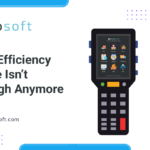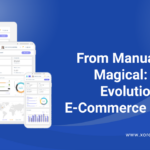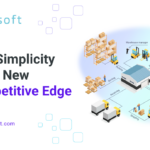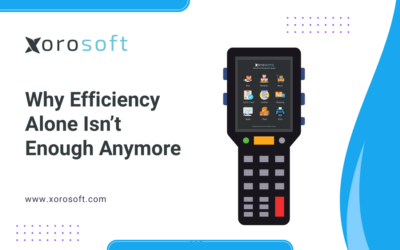
How Ecommerce Back Office Software Is Powering a New Kind of Growth
Ecommerce back office software is driving one of the quietest yet most powerful shifts in the ecommerce industry. Every day, it’s transforming how brands manage inventory, track orders, and make faster financial decisions. Furthermore, teams are finding calm and clarity where there was once chaos. As a result, founders and operations leaders can focus on growth instead of constant problem-solving. Ultimately, this shift empowers brands to scale with less stress and more confidence.
If you want to simplify your operations and build scalable systems, explore our features page or see real examples on our case studies page.
Why Ecommerce Back Office Software Matters More Than Ever
Every ecommerce brand starts with spreadsheets and disconnected tools. However, as operations grow, those tools start causing friction. Consequently, reporting becomes inconsistent, and visibility declines. Additionally, decision-making slows down when data lives in multiple places.
Ecommerce back office software, on the other hand, connects everything—from Shopify to your warehouse and accounting system. Therefore, you gain a single source of truth across all functions. In other words, your brand moves from reactive to proactive operations. Moreover, your team can adapt faster when the market shifts.
Ultimately, the most forward-thinking leaders adopt connected systems to regain control and strengthen long-term efficiency.
The Hidden Costs of Disconnected Operations
Even fast-growing ecommerce brands encounter hidden costs when systems don’t communicate. As a consequence, scalability becomes much harder. In turn, growth becomes less predictable and more stressful.
- Disconnected systems: Shopify, 3PLs, and finance tools operate independently. As a result, teams rarely agree on what’s accurate.
- Slow decisions: Each report requires multiple exports. In many cases, clarity takes days to achieve.
- Manual reconciliation: Month-end reporting still relies on spreadsheets. Because of this, accuracy suffers and fatigue grows.
By contrast, ecommerce back office software synchronizes every process. Consequently, collaboration improves, and valuable time is saved. Meanwhile, teams work with confidence because they share one accurate view of reality.
A Real Example of Calm in Action
Consider Evergrain Supply Co., a $10 M DTC and retail hybrid. Before implementing ecommerce back office software, their systems constantly created confusion.
Before:
-
12 spreadsheets and 3 disconnected tools
-
Inventory accuracy: 91 %
-
Order-to-ship time: 3.8 days
-
Month-end close: 5 days
After:
-
Real-time sync across Shopify, warehouse, and accounting
-
Inventory accuracy: 99 %
-
Order-to-ship time: 1.4 days
-
Month-end close: 1.5 days
As a result, the team stopped firefighting and began focusing on strategic growth. In addition, morale improved because everyone trusted the same data. Eventually, this alignment created faster decisions and fewer delays.
For more results like these, visit our case studies.
The Core Benefits of Using Ecommerce Back Office Software
1. Total Operational Visibility
When data flows through a single platform, decisions become faster and more confident. Consequently, operational mistakes drop, and insights increase. As a result, teams execute with precision and trust.
2. Automated, Efficient Workflows
Automation replaces repetitive tasks. Therefore, your team can focus on creative initiatives. Moreover, processes become consistent across all departments. In the long run, efficiency creates measurable financial benefits.
3. Real-Time Profit Clarity
By integrating sales, costs, and returns, brands gain visibility into actual profit per channel. As a result, they can adjust pricing or purchasing instantly. Similarly, finance teams make decisions using accurate, real-time data.
4. Faster Cash Conversion
Because orders, invoices, and payments sync automatically, the order-to-cash cycle shortens. In turn, cash flow strengthens and supports sustainable scaling. Additionally, financial forecasting becomes easier and more reliable.
5. Calm, Connected Teams
When everyone shares the same data, communication becomes seamless. Ultimately, meetings are shorter, goals are clearer, and execution improves. In conclusion, operational harmony becomes the new normal.
How to Implement Ecommerce Back Office Software Step-by-Step
Although upgrading your back office can sound complicated, it doesn’t have to be. With a structured plan, most teams can start seeing results quickly.
Step 1: Connect Sales Channels
Integrate Shopify, Amazon, and POS systems. Consequently, inventory updates automatically, avoiding oversells. At the same time, order data stays synced everywhere.
Step 2: Sync Fulfillment and Finance
Connect warehouses, 3PLs, and accounting systems. Therefore, orders and invoices remain perfectly aligned. As a result, reconciliation errors decrease sharply.
Step 3: Automate Data Flow
Replace manual file transfers with live integrations. In addition, eliminate duplicate entries permanently. Consequently, time spent on admin tasks drops dramatically.
Step 4: Reconcile Instantly
Use automated reconciliation tools to close faster. Moreover, this reduces stress at month-end. Eventually, reporting becomes a simple daily routine.
Step 5: Track Profitability in Real Time
Measure margins at the SKU level continuously. Additionally, visualize trends before they impact revenue.
Step 6: Forecast Smarter
Use predictive analytics to anticipate demand. Consequently, inventory remains balanced, and waste drops.
Step 7: Build Live Dashboards
Create dashboards that refresh automatically. Therefore, every meeting starts with accurate insights and clear direction.
To experience these steps firsthand, book a demo and explore automation in real time.
Your 5-Day Roadmap to a Connected Back Office
Day 1: Map your current systems and note bottlenecks.
Day 2: Choose the right ecommerce back office software. For example, compare options on G2.
Day 3: Connect Shopify and verify data accuracy. After that, review integrations for fulfillment and finance.
Day 4: Add all operational systems. Meanwhile, test real-time syncing and reporting.
Day 5: Launch live dashboards. Finally, measure improvements and share results with your team.
Overall, this plan lets you see measurable improvement in a single week.
Results You Can Measure
| Metric | Before | After |
|---|---|---|
| Order accuracy | 92 % | 99.5 % |
| Order-to-cash cycle | 5 days | 2 days |
| Inventory variance | 8 % | < 1 % |
| Month-end close | 5 days | 1.5 days |
| Manual data entries | 300 +/ week | < 50 / week |
In short, every small improvement creates compounding value across your organization. Furthermore, these results are sustainable, not short-term spikes.
How to Choose the Right Ecommerce Back Office Platform
Choosing a platform depends on your goals and tech stack. Nevertheless, the best systems share these qualities:
1. Native Shopify integration for easy syncing
2. Unified data model for full visibility
3. Real-time dashboards that refresh automatically
4. Automation tools that remove manual work
5. Simple interfaces for non-technical teams
If you’re exploring tools, Xorosoft ERP on Shopify combines these capabilities into one connected solution for growing ecommerce brands.
The Future of Ecommerce Operations
Ecommerce complexity continues to rise as brands expand. Therefore, simplicity has become a true competitive advantage. In fact, calm operations now separate successful brands from the rest. As a consequence, integrated back-office systems are becoming essential, not optional.
By implementing ecommerce back office software, you’re not just modernizing—you’re future-proofing. In summary, you create the foundation for confident decision-making and scalable growth. In short, this quiet revolution is already reshaping how modern commerce works.
Start Simplifying Your Operations Today
Ready to build operational calm and clarity?









